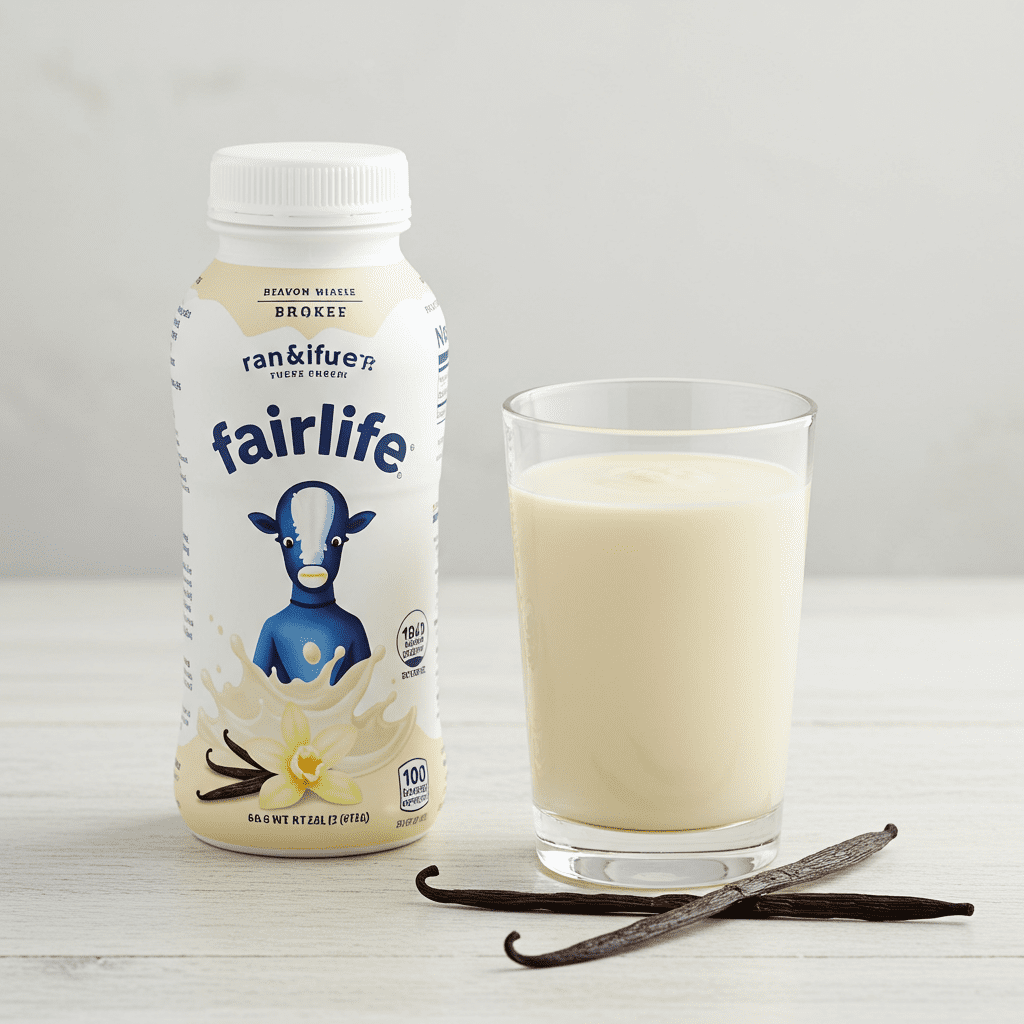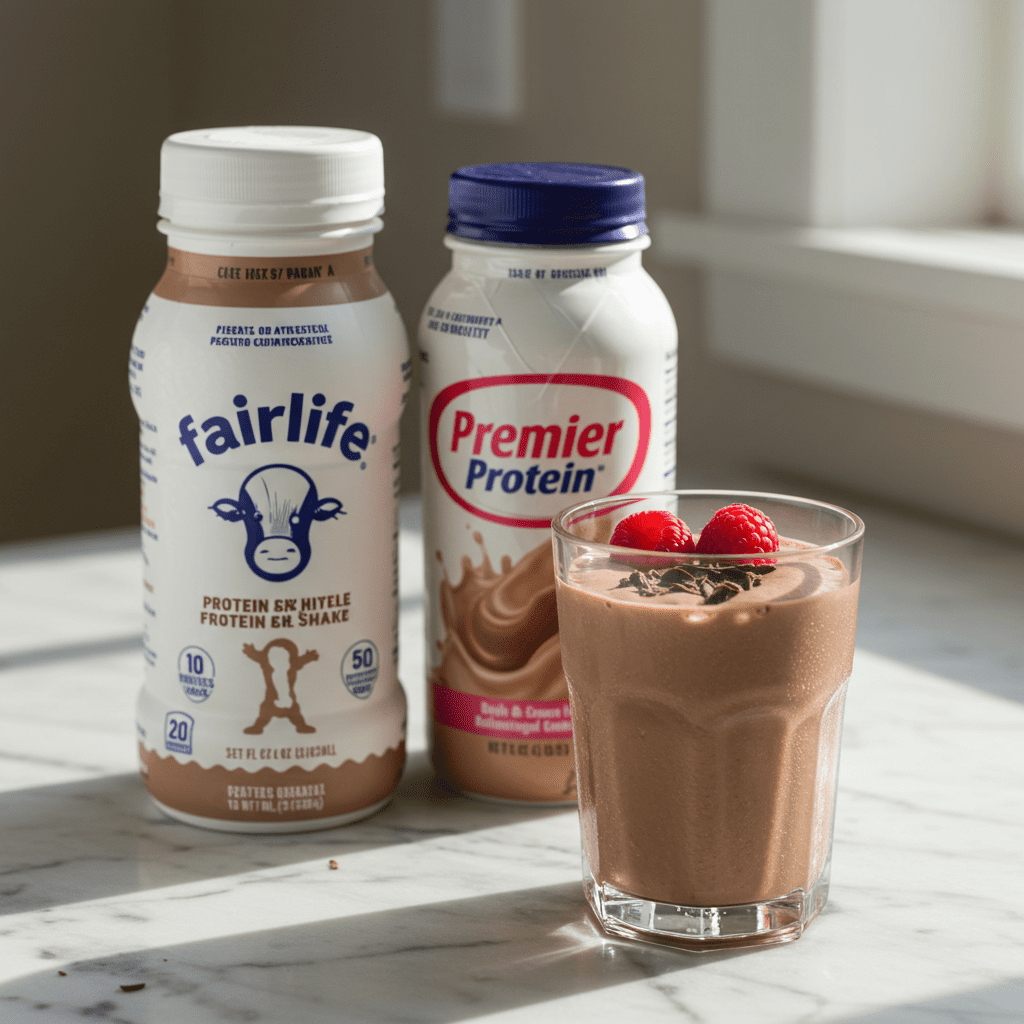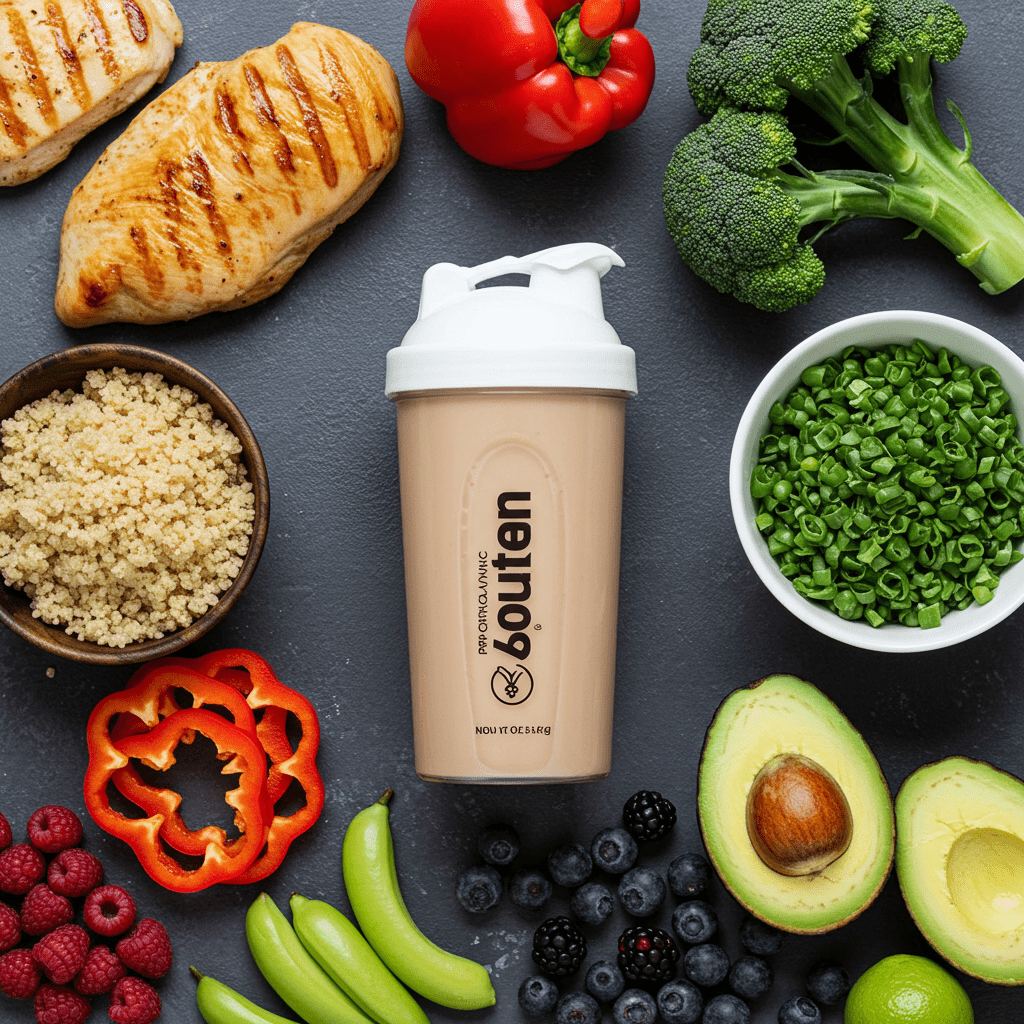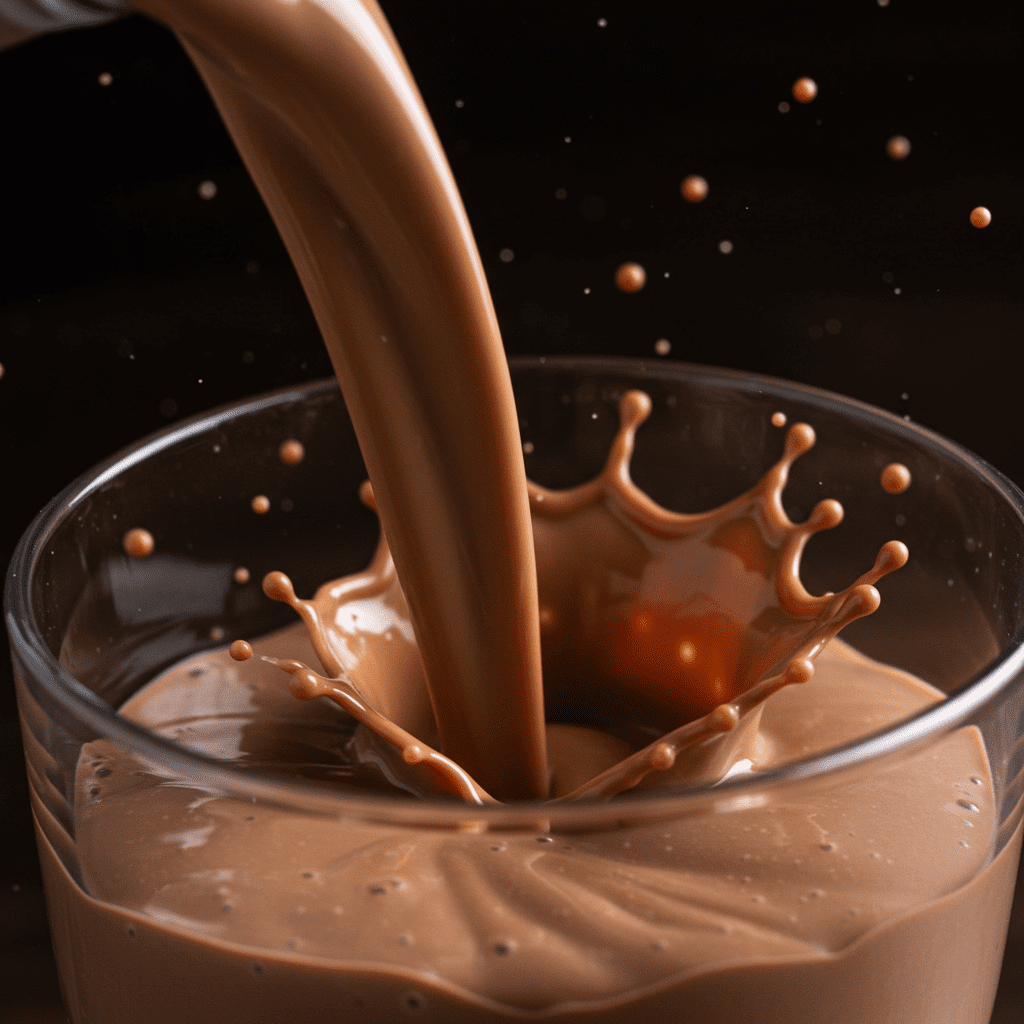Fairlife Or Premier Protein: A Dietitian’s Honest Comparison

In the world of grab-and-go nutrition, Fairlife and Premier Protein shakes are giants.
You see them everywhere, from gym bags to office fridges.
They both promise high protein, great taste, and ultimate convenience.
But when you’re standing in the grocery aisle, the choice can be confusing.
Which one is actually better for you?
As a registered dietitian, my goal is to help you understand not just what’s on the label, but what it means for your body.
This isn’t just about picking a winner; it’s about finding the right fit for your specific health goals, taste preferences, and budget.
Let’s break down the science, the nutrition, and the real-world experience of Fairlife and Premier Protein.
- First, Why Are We All Drinking Protein Shakes Anyway?
- A Closer Look at Premier Protein
- Understanding the Fairlife Difference
- Nutrition Face-Off: Which Shake Has The Edge?
- What About Taste and Texture
- Breaking Down the Cost Per Shake
- My Dietitian’s Verdict: Which One Should You Buy?
- A Quick Word on Whole Food
- Conclusion
First, Why Are We All Drinking Protein Shakes Anyway?

Before we compare brands, it’s important to understand the role of a ready-to-drink (RTD) protein shake.
Their popularity has soared for a few key reasons.
First, convenience is king.
They offer a quick, no-mess way to get a significant dose of protein, which is incredibly helpful on busy days.
Second, protein is a powerhouse macronutrient.
Research consistently shows that adequate protein intake is crucial for muscle repair and growth, especially after exercise.
A 2018 study in the British Journal of Sports Medicine confirmed that protein supplementation can enhance muscle strength and size in adults who strength train.
Furthermore, protein is known for its effect on satiety—the feeling of fullness.
Including a protein source at meals and snacks can help stabilize blood sugar levels and keep you feeling satisfied longer, which can be a valuable tool for weight management, as supported by studies from the American Society for Nutrition.
These shakes are a practical tool, but remember, they are supplements designed to • add to, not entirely replace, a diet rich in whole foods.
A Closer Look at Premier Protein

Premier Protein has built a reputation on a simple, effective formula.
A standard 11.
5-ounce shake delivers 160 calories and a hefty 30 grams of protein.
This protein comes from a blend of milk protein concentrate and calcium caseinate.
These are high-quality, slow-digesting proteins, which makes them excellent for sustained satiety.
One of Premier’s standout features is its extensive fortification; it contains 24 different vitamins and minerals, often providing 25% or more of your daily value for each.
This can be a pro if you’re looking to fill potential nutritional gaps.
However, for sweetness, it relies on artificial sweeteners like sucralose and acesulfame potassium.
While the FDA considers these safe, some individuals may be sensitive to them or simply prefer to avoid them.
The biggest draw for many is the sheer variety of flavors—from staples like Chocolate and Vanilla to creative options like Café Latte and Cake Batter Delight, they offer something for almost every palate.
Understanding the Fairlife Difference

Fairlife’s approach is centered on its primary ingredient: ultra-filtered milk.
This process concentrates the protein and calcium naturally found in milk while filtering out much of the sugar (lactose).
The result is a product that is naturally higher in protein, lower in sugar, and lactose-free, making it a fantastic option for those with lactose intolerance.
Fairlife offers a few distinct lines: the Nutrition Plan shake is their most direct competitor to Premier, offering 150 calories and 30 grams of protein.
The Core Power line, designed for post-workout recovery, provides 26 grams of protein.
For serious athletes, the Core Power Elite shake boasts an impressive 42 grams of protein.
For sweeteners, Fairlife uses a blend of natural and artificial options, including monk fruit, stevia, and sucralose.
This might appeal to those looking to reduce their intake of purely artificial sweeteners.
While their core flavors like Chocolate and Vanilla are widely praised for their creamy, milk-like taste, their flavor selection is significantly more limited than Premier’s.
Nutrition Face-Off: Which Shake Has The Edge?
When we put the Fairlife Nutrition Plan and Premier Protein head-to-head, they are remarkably similar.
Both provide 30 grams of high-quality, complete protein with all essential amino acids.
The key differences lie in the details.
Protein Source: Fairlife’s ultra-filtered milk gives it a natural edge for anyone with lactose intolerance.
Premier’s milk protein concentrate is still an excellent dairy protein but isn’t lactose-free.
Sweeteners: This is a matter of personal preference.
Fairlife uses a blend including natural stevia and monk fruit, while Premier relies solely on artificial sweeteners.
There’s no definitive ‘better’ option from a health standpoint for most people, according to regulatory bodies like the FDA, but some prefer the taste and source of one over the other.
Vitamins & Minerals: Premier is the clear winner here, acting almost like a multivitamin in a bottle.
If your diet is lacking, this could be a significant benefit.
However, as a dietitian, I’d argue it’s always best to get your micronutrients from a balanced diet of whole foods.
Additives: Both shakes use thickeners like cellulose gel and gum to achieve their creamy texture.
Premier Protein also contains carrageenan, an additive that some people choose to avoid due to concerns about inflammation, although major health authorities have deemed it safe for consumption.
What About Taste and Texture
You can analyze labels all day, but if you don’t enjoy drinking the shake, you won’t stick with it.
This is where personal preference plays a huge role.
Texture: Many users agree that Fairlife has a distinct advantage in texture.
Thanks to its ultra-filtered milk base, it tastes remarkably similar to a creamy, smooth chocolate milk.
It’s less thick than many other shakes and has very little aftertaste.
Taste: Premier Protein is often described as sweeter and thicker.
While many find it delicious, it can sometimes have a subtle ‘protein’ aftertaste common in many protein supplements.
Flavor Variety: Premier Protein is the undisputed champion of flavor.
With a constantly rotating menu of seasonal and dessert-inspired flavors, it offers a variety that can prevent flavor fatigue.
If you’re someone who gets bored easily, Premier’s extensive lineup is a massive advantage.
Fairlife sticks to the basics, but they execute them very well.
Breaking Down the Cost Per Shake

For many, the final decision comes down to budget.
Generally, Premier Protein is the more affordable option.
A 12-pack of Premier Protein often costs around $25-$27, which breaks down to about $2.
08-$2.
25 per shake.
Fairlife tends to be priced at a premium.
A 12-pack of the Fairlife Nutrition Plan shakes typically runs from $32-$35, or about $2.
67-$2.
92 per shake.
The specialized Core Power Elite shakes are even more expensive, often exceeding $3.
50 per bottle.
While you can find sales and bulk discounts at warehouse stores like Costco or Sam’s Club for both brands, you can almost always expect to pay more per serving for Fairlife.
This price difference reflects Fairlife’s more complex filtration process and positioning as a premium dairy product.
My Dietitian’s Verdict: Which One Should You Buy?
After reviewing all the evidence, there isn’t a single ‘best’ shake.
The right choice truly depends on your individual needs.
Here’s how I advise my clients: Go for Premier Protein if:• You’re on a tighter budget.
It consistently offers the best value.
You love variety.
Their endless flavor options keep things interesting.
• You want a vitamin boost.
The added vitamins and minerals can help supplement your diet.
Choose a Fairlife Shake if:You are lactose intolerant.
This is the easiest and most obvious choice for digestive comfort.
• Texture is your top priority.
If you want a shake that tastes more like real milk, Fairlife wins.
You prefer a different sweetener profile.
Its blend of monk fruit, stevia, and sucralose may be more appealing to you.
*You’re a serious athlete (Core Power Elite).
If you need more than 30g of protein for recovery, the 42g Elite shake is specifically designed for you.
A Quick Word on Whole Food
As a dietitian, I have to emphasize that these shakes are supplements, not long-term meal replacements.
They are incredibly useful for plugging nutritional gaps, aiding post-workout recovery, or getting you through a hectic day.
However, they lack the fiber, phytonutrients, and complex carbohydrates found in whole foods.
A balanced diet built on fruits, vegetables, lean meats, and whole grains should always be your foundation.
Use these shakes as a strategic tool to support your healthy lifestyle, not as a crutch to replace it.
Think of it as building a house: whole foods are the foundation and frame, while a protein shake is the high-quality, convenient window you install in a key spot.
Conclusion
In the matchup of Fairlife vs.
Premier Protein, both brands have created excellent products that serve different needs effectively.
There is no wrong answer here.
Premier Protein offers fantastic value, incredible flavor variety, and a bonus of vitamins and minerals.
Fairlife delivers a premium, smooth-tasting, lactose-free product with a different approach to sweeteners.
Your best choice comes down to a simple evaluation of your priorities: budget, flavor preference, digestive needs, and ingredient philosophy.
By understanding the key differences we’ve outlined, you can feel confident picking the shake that will best help you reach your health and fitness goals.

[…] I recommend Fairlife 2% milk because its higher protein content contributes to a creamier result. However, any milk, from whole milk to plant-based options […]
[…] biggest advantage of a Premier Protein shake is its powerful combination of high protein and convenience. For many people, this is a […]
[…] a treat that easily fits within these guidelines. Furthermore, using a higher-protein milk like Fairlife gives this ice cream a satisfying protein boost, with around 7 grams per serving, which can help with […]